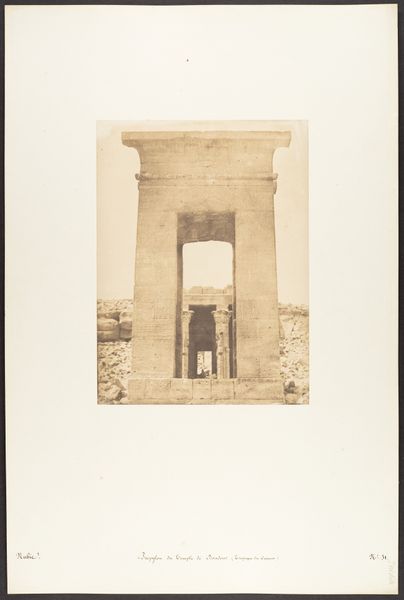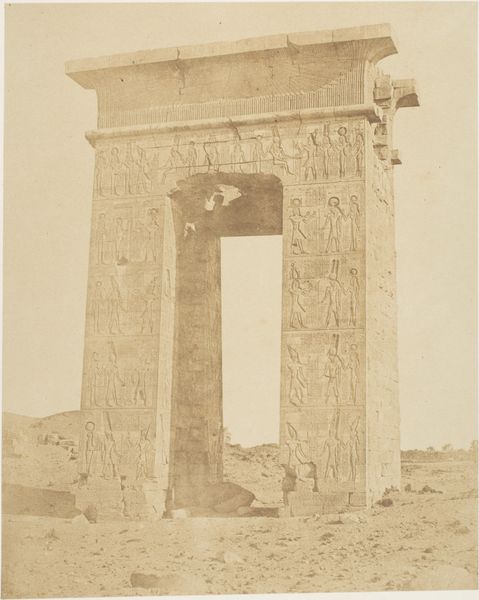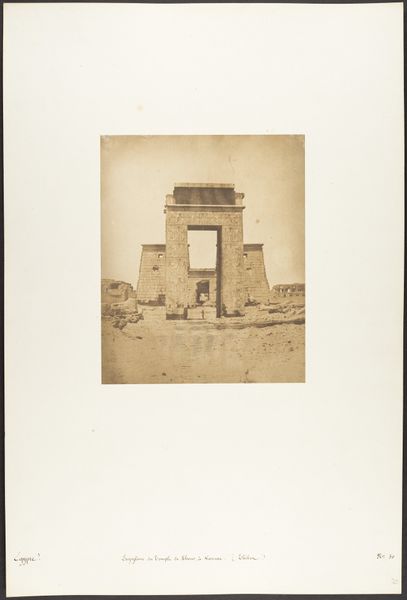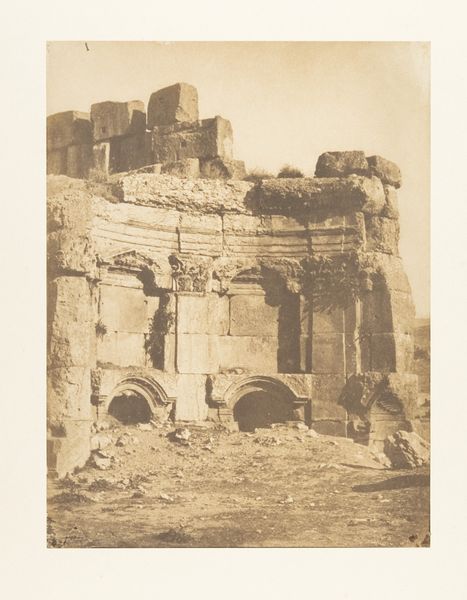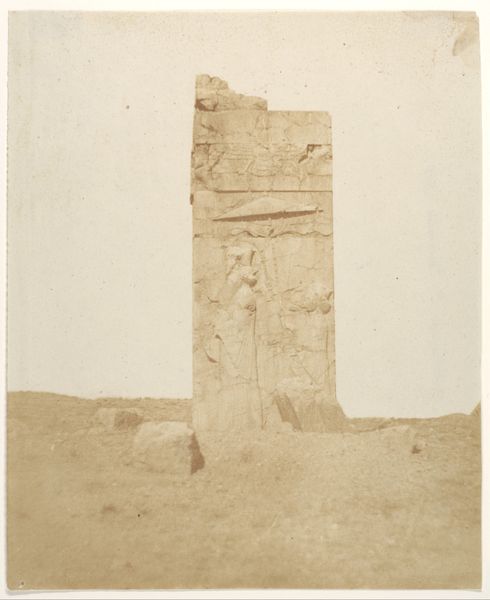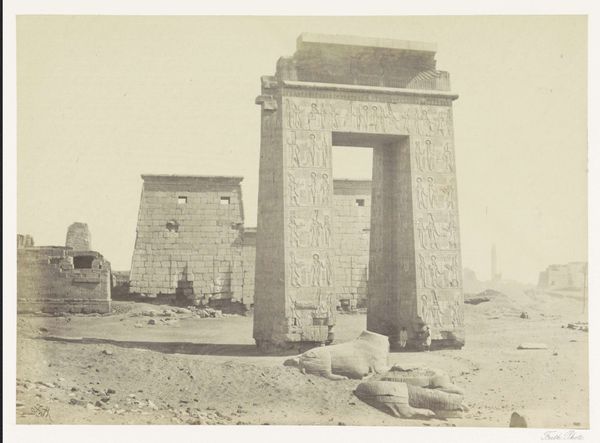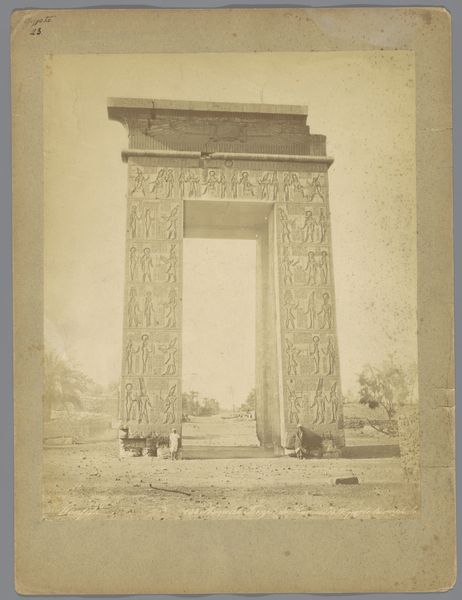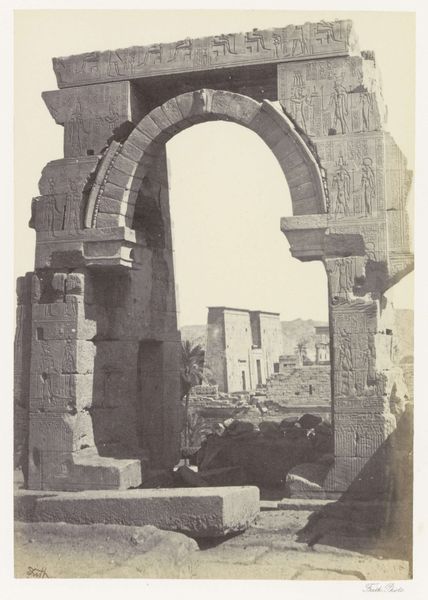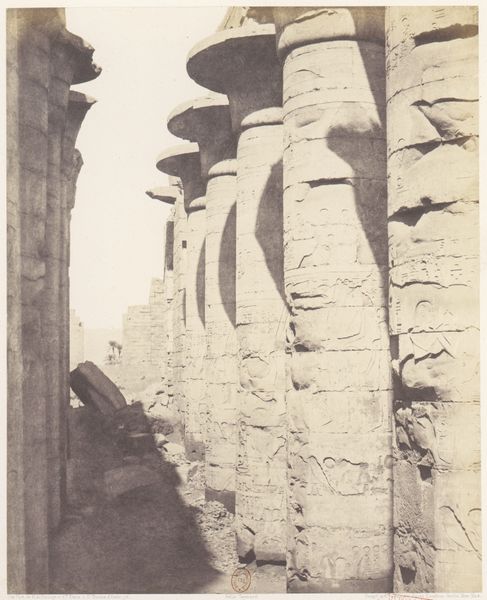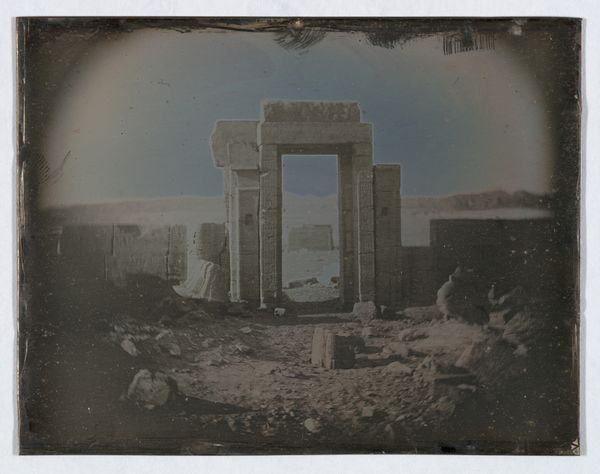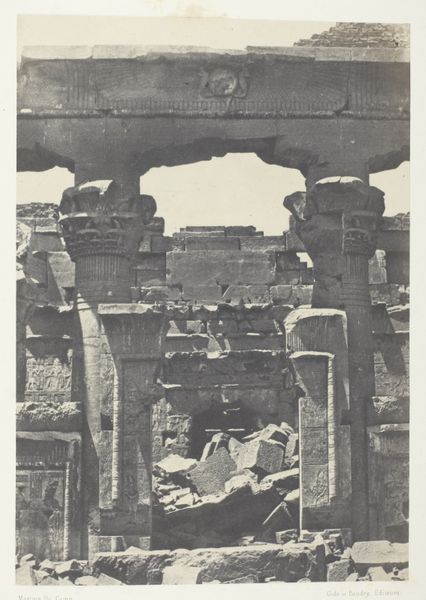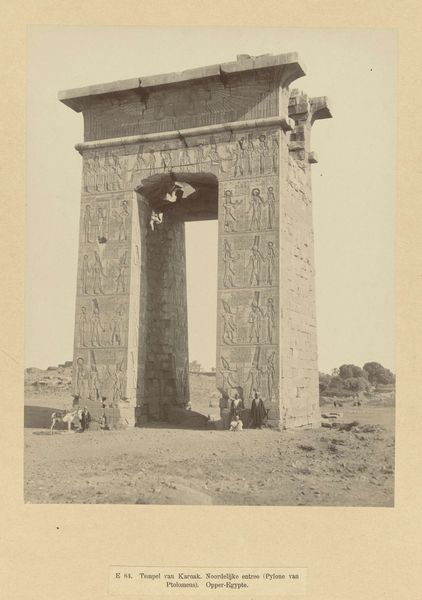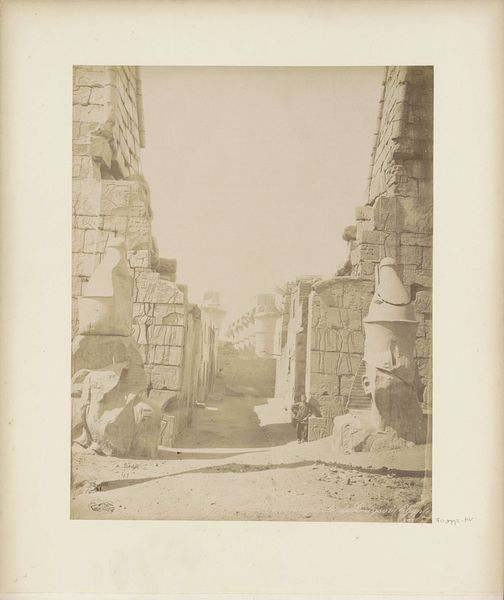
Propylon du Temple de Dandour (Tropique du Cancer) 1849 - 1851
0:00
0:00
photography, architecture
#
landscape
#
ancient-egyptian-art
#
photography
#
geometric
#
ancient-mediterranean
#
architecture
Dimensions: Image: 8 3/4 × 6 9/16 in. (22.2 × 16.6 cm)
Copyright: Public Domain
Editor: Here we have Maxime Du Camp's "Propylon du Temple de Dandour (Tropique du Cancer)", taken between 1849 and 1851. The architecture is fascinating, but the image feels heavy, monolithic. What stories do you think are embedded within it? Curator: Think about this: light itself acts as a symbol here. The stark, almost brutal clarity with which Du Camp captures this propylon – it speaks of both endurance and vulnerability. Do you notice how the hieroglyphs, even in this early photographic rendering, convey a sense of encoded knowledge? Editor: Absolutely! They’re like visual keys to a forgotten language. Is that part of the emotional impact, this sense of lost meaning? Curator: Precisely. Consider what a 'propylon' is - it’s not just a gateway, but a threshold. It marks a transition, promising entry into a sacred space. But here, the photograph gives us only a glimpse, fueling curiosity and highlighting that which remains unseen. What psychological weight do you think the photographer hoped to express? Editor: Perhaps it's the power of what’s just beyond our grasp? The secrets held by this civilization... or a meditation on mortality, perhaps? Curator: It's that feeling of standing at the edge of understanding. Photography, in its infancy, grappling with representing the monumental, the spiritual. Editor: I see it now. It's more than just a picture of a temple; it's a photograph of the human yearning for what’s beyond our reach, all held within these symbolic forms. Curator: Indeed. A portal and a promise captured in sepia tones, preserving and provoking reflection.
Comments
No comments
Be the first to comment and join the conversation on the ultimate creative platform.
